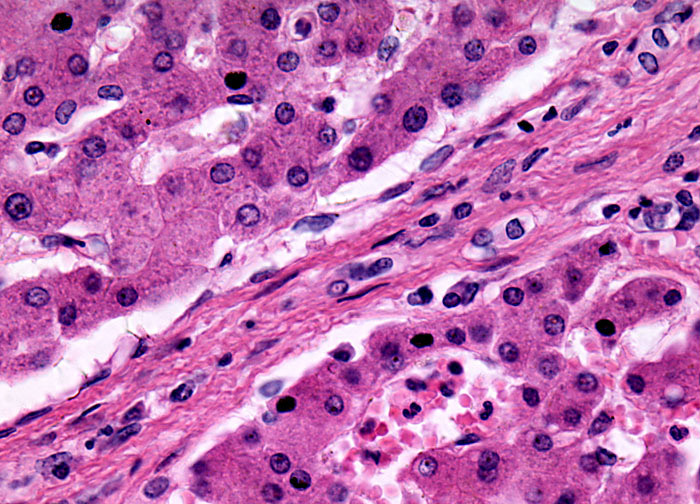
Liver Cirrhosis at 40x Magnification
Cirrhosis is a chronic degeneration of an organ that results in the replacement of healthy tissues with fibrous connective tissue. The term is most frequently used to describe a diseased state of the liver, the organ that most commonly is affected by cirrhosis. Liver cirrhosis is caused by many underlying conditions and diseases, including alcoholism, hepatitis B and C, cystic fibrosis, hemochromatosis, liver fluke infection, Wilson disease, and biliary atresia, among others. The leading causes of cirrhosis vary by geographic region. In the Western hemisphere, long-term, excessive alcohol use is most commonly linked with the condition, in which case it is known as portal cirrhosis. Hepatitis infection is more often the cause of cirrhosis in many other regions of the world, especially in less-developed nations. Gender is also sometimes a factor in the development of the degenerative condition, men more commonly developing portal cirrhosis and women more often developing a form of the disease known as primary biliary cirrhosis, which is related to an autoimmune disorder that causes inflammation of the bile ducts.













